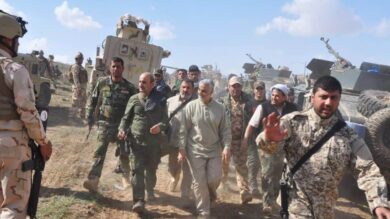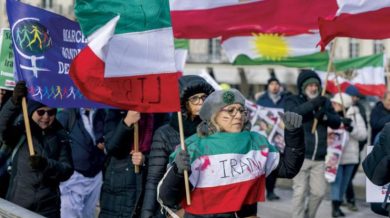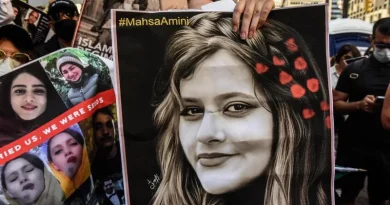In Iran, women who speak out against injustice are often met with brutal repression, especially at the hands of the Islamic Revolutionary Guard Corps (IRGC). Journalists, activists, and human rights defenders have been arrested, imprisoned, tortured, and silenced, simply for advocating basic freedoms and democracy.
Yet, despite facing unimaginable oppression, many women political prisoners continue to resist from behind bars, becoming symbols of courage and sources of inspiration for the world.
This article sheds light on:
• The IRGC’s crackdown on women activists and journalists
• The harrowing realities inside IRGC-run prisons
• The voices of resistance from imprisoned women
• The need for global solidarity and action
1. The IRGC’s Crackdown on Women Journalists and Activists
A. Why Women Are a Threat to the Regime
The Iranian regime, with the IRGC as its enforcer, fears women-led resistance because:
• Women challenge state-enforced gender laws, like the mandatory hijab.
• Women document human rights violations, exposing state brutality.
• Women mobilize communities, organizing protests and movements.
• Women connect Iran’s struggles to global audiences through social media and journalism.
The IRGC systematically arrests women to silence dissent and prevent resistance from spreading.
B. How the IRGC Targets Women’s Voices
The IRGC and Iran’s judiciary use various tactics to suppress activists and journalists, including:
• Arbitrary arrests on false charges like “acting against national security”.
• Forced confessions extracted under torture.
• Lengthy prison sentences for peaceful activism.
• Physical and psychological abuse inside notorious prisons like Evin and Qarchak.
• Targeting families of imprisoned women, increasing pressure and intimidation.
Despite these brutal tactics, Iranian women refuse to be silenced.
2. Inside IRGC-Run Prisons: The Brutal Reality
Women political prisoners are often sent to Evin Prison and Qarchak Prison, notorious for:
• Overcrowding and horrific sanitary conditions.
• Torture and sexual abuse by IRGC interrogators.
• Solitary confinement for indefinite periods.
• Denial of medical treatment for prisoners on hunger strike.
• Threats against family members to break their will.
Yet, despite these torturous conditions, many women continue their activism from behind bars.
3. Voices of Courage: Women Who Defied the IRGC
A. Narges Mohammadi: The Human Rights Defender
Narges Mohammadi, a human rights activist and Nobel Peace Prize laureate, has been arrested multiple times for:
• Fighting against the death penalty in Iran.
• Advocating for women’s rights and political prisoners.
• Exposing torture inside Iranian prisons.
Even from prison, she continues to write letters, exposing abuses and inspiring international pressure against the IRGC.
B. Nasrin Sotoudeh: The Lawyer Who Defended the Voiceless
Nasrin Sotoudeh, a prominent human rights lawyer, was sentenced to 38 years in prison and 148 lashes for:
• Defending women prosecuted for removing their hijabs.
• Representing political prisoners in court.
• Speaking against child executions in Iran.
Despite the brutal sentence, Sotoudeh remains one of Iran’s strongest voices for justice and freedom.
C. Sepideh Gholian: The Labor Rights Activist
Sepideh Gholian, a journalist and labor rights activist, was arrested, tortured, and forced into televised confessions.
• After her release, she boldly chanted anti-regime slogans outside Evin Prison.
• She was immediately re-arrested, proving that resistance does not end with imprisonment.
Her case highlights the IRGC’s fear of women who refuse to stay silent.
D. Masih Alinejad: The Voice in Exile
While not imprisoned, Masih Alinejad, a journalist and activist, has been a major target of IRGC repression.
• She founded the #MyStealthyFreedom movement, encouraging Iranian women to share photos without hijab.
• The IRGC plotted to kidnap and assassinate her, proving their desperation to silence women’s voices.
• From exile, she continues to expose Iran’s human rights abuses and connect Iranian women’s struggles with the world.
Her activism highlights how Iranian women’s resistance is now global.
4. The Global Responsibility: How the World Can Help
A. Demand the Release of Women Political Prisoners
• Governments, human rights groups, and the United Nations must call for the immediate release of all female political prisoners.
• Diplomatic pressure and sanctions should target officials involved in human rights violations.
B. Designate the IRGC as a Terrorist Organization
• The United States has already designated the IRGC as a terrorist organization.
• The European Union and other nations must follow suit, cutting off the IRGC’s financial networks and isolating it internationally.
C. Provide Digital and Legal Support for Activists
• Secure communication tools must be provided to Iranian activists.
• Asylum policies should be strengthened for women journalists and activists fleeing persecution.
• International courts must investigate the IRGC’s crimes against humanity.
D. Amplify the Voices of Imprisoned Women
• International media must highlight the names and stories of imprisoned women.
• Social media campaigns like #FreeIranianWomen and #BanIRGC must continue.
• Artists, writers, and filmmakers can document and share Iranian women’s struggles through books, films, and exhibitions.
Conclusion: The Voices That Cannot Be Silenced
Despite the IRGC’s brutality, Iranian women remain defiant. Their voices from prison inspire a global movement that demands:
✔ Justice for the oppressed.
✔ Freedom for the imprisoned.
✔ Accountability for the perpetrators.
These women are not just victims—they are leaders. Their courage proves that no prison can contain the fight for freedom.
Join Our Newsletter!
Stay informed with the latest updates, news, and ways to take action in the fight for justice and global security. Sign up now to get updates delivered straight to your inbox!





